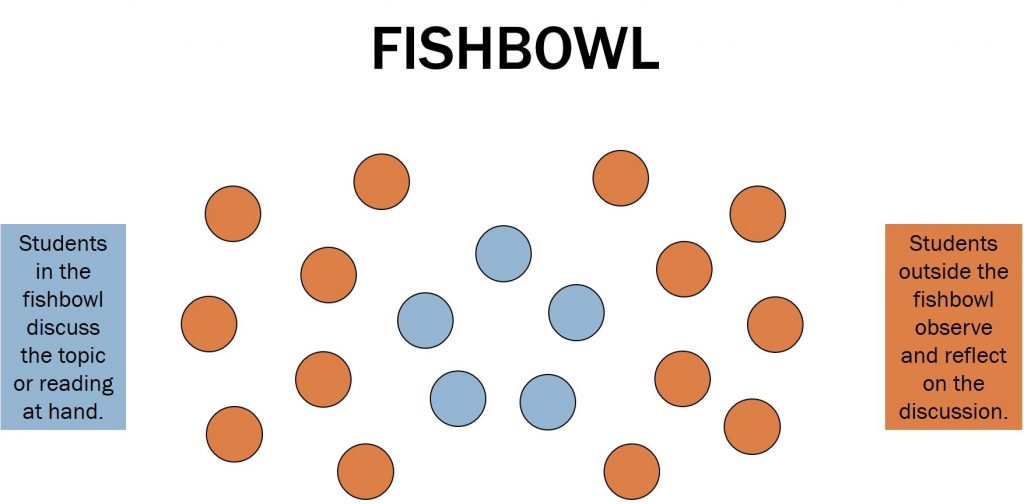What is the significance of discussion in math? Simply put, it engages more parts of the brain and aids in a student’s understanding of a mathematical idea.
As you may know, children think about and solve problems in a variety of ways. Therefore, one student’s strategy may be quite different from that of another. On the other hand, students have a meaningful mathematical dialogue when they share their work and compare similarities and differences. Instead of simply listening to and copying a teacher’s problem-solving approach step by step, this engages more brain areas.
The layout of math classrooms is shifting across the globe. Students are no longer sitting calmly in rows, copying down a problem their teacher has solved. Instead, many of the classrooms are set up in a group arrangement. Collaboration, productive struggle, and rich student-to-student discourse are all possible as a result.
The Fishbowl Discussion is a teaching method that promotes active student engagement, reflection, and knowledge depth. The fish (in the fishbowl) will be played by a small group of students, with the remainder of the class acting as viewers (out of the fishbowl). Students in the bowl take part in a discussion in response to a prompt from the teacher. Outside the bowl, students listen and consider the differing viewpoints.

Use it when you want
- Ensure that all students participate in a conversation,
- Improve speaking and listening skills,
- Encourage reflection on and assessment of the aspects of a good discussion, or
- Provide an effective approach for debating controversial or difficult issues.
The fishbowl strategy is useful when discussing problem-solving techniques for a complex problem or as part of a lesson.
Students can talk about how they solved a question. This strategy permits the inner group—the fish—to discuss how they solved the problem. The outside group can ask the inner group questions once the inner group is finished. One method is to discuss the similarities and differences in problem-solving strategies. This maintains a high level of engagement and tempo throughout the course.
What will you need?
- Laptop, tablet, or mobile phone
Preparation
- Come up with an investigative question or problem that has a lot of different methods to solve.
- Create benchmarks for students to evaluate the quality of the discussion.
- Decide on the method you want to take and get the technologies you’ll need to make it happen (ex., Create a shared Google Doc for each group or set up your Zoom session for the class).
Procedure
- During scheduled class time, direct students to the Zoom session.
- Give the students a topic to talk about or discuss.
- Give students instructions on how to listen to and participate in the discussion.
- Assign students to small groups. Limit the number in each group to 3-5.
- Allow small groups time to gather their thoughts (up to 5 minutes) before beginning the Fishbowl.
- After 5 minutes, call students back into the main room from their breakout groups.
- Begin the Fishbowl conversation by highlighting one group’s performance.
- Hover your cursor over the students you want to highlight as Fish in the Fishbowl in Zoom. Select “Spotlight for all” from the three dots in their window. This should be done for each kid who will be a fish in the Fishbowl.
- Re-pose the question to the fish and invite them to begin debating or discussing it.
- Non-fish students take notes or evaluate the topic using a rubric shared via Google Docs. Students are given time to ask questions of the participants in various scenarios.
- When the debate is finished, concentrate the class on the following fishbowl group’s performance (“unpin” spotlighted students in Zoom).
- Facilitate a debriefing when the fishbowl timer runs out. Students should consider the discussion’s strengths and flaws and the quality of their performances, and what they learned from the activity. A fishbowl assessment form could help with the debriefing.
Plenary
Review the outcomes of the activity. Assess students’ knowledge through Oryx Learning which offers math practice exercises, formative and summative assessments, and a personalized learning dashboard to facilitate a self-paced learning path to mastery. It provides learners with a strong foundation to develop higher-order thinking skills.







